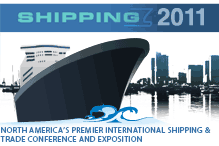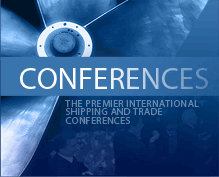
Understanding Ship yard securitization
by Richard Henderson, Watson, Farley & Williams
Background
Securitisation in shipping is very much in vogue.
We have seen securitisation of banks’ shipping portfolios such as DNI’s program over the last couple of years.We have seen securitisation by owners of receivables, particularly container receivables, such as the high profile COSCO transactions but also the Wightlink (ferry) receivables and others. And we have seen securitisation by shipyards of their newbuilding projects. It is this which I intend to review here. As a firm Watson, Farley & Williams has been involved in a number of the pioneering projects in these markets. Last year Watson, Farley & Williams was involved in over $1bn of newbuilding securitisation and currently have another $1bn of such projects under way.
“Securitisation” is about the packaging up of receivables and obtaining funding by the issue of securities on the strength of the credit risk of those receivables. In a sense, it is a glorified form of factoring financed by the securities markets. However, the term has such a wide meaning that it is not necessary either to have a “receivable” or to issue any securities for a transaction to be described as a securitisation. Shipbuilding securitisation is a case in point. In practice, shipyards are looking for off balance sheet construction finance. This is not new and in one form or another it has been around for several years. If banks want to call it “securitisation”, fine. “Off-balance sheet work in progress finance” would probably be more accurate, but calling it “securitisation” seems to make it easier to sell.
Continue Reading
The Fading Beauty of the North Sea
by Geir Kaasen, Senior Financial Analyst, Orkla Securities
During the last year total exploration & spending activity dropped 24% last year to approx. USD 65 bill. The North Sea sector was one of the regions that suffered most with a 35% drop from 1998. Despite the fact that we expect global E&P spending to grow by 11% this year and 12% next year, North Sea activity is only expected to show little growth in 2001 (+6%) and remain flat this year. The reason is that most of the oil companies are spending allocated funds on Brazil, West Africa and US Gulf region – leaving North Sea as a large, but not a preferred, area. This has lead to lower activity, utilization and dayrates for many offshore segments both in the Norwegian and the UK sector of the North Sea.
Continue Reading
RECOVERY RELIANT RESTRUCTURING, Analysis of Hvide Marine, Inc.
by Geoff Uttmark
Hvide Marine emerged from Chapter 11 on December 15, 1999, just 98 days after filing for bankruptcy protection back on September 8th . That no less than 160 separate petitions were filed on behalf of the company and its subsidiaries with nary a single shareholder lawsuit is testimony to expert pre-planning and early and often public disclosure. There was some degree of good luck, if such a term is applicable to a bankruptcy, in that most of Hvide’s bonds and preferred shares were concentrated in the hands of a small number of institutional investors. The reorganization plan had the support of Loomis, Sayles & Co, LP which represented the holders of approximately 63% of the Company’s $300m 8 3/8% Senior Notes and nearly 50% of the Company’s $115m Trust Convertible Preferred Securities. A $300m debtor-in-possession (DIP) credit facility provided by Hvide’s pre-petition bank group, including $241m of “carry-through” debt and $60m in new financing to meet working capital needs, was used to immediately satisfy almost half of the company’s trade payables in cash. This headed off concerns, especially in overseas jurisdictions where the possibility of seizure of vessels was deemed greatest, that Hvide might go into liquidation. Showing initiative throughout the bankruptcy proceeding, rather than abdicating responsibilities to a court-appointed trustee, paid off for Hvide. Both the company’s assets and image as a going concern survived, albeit a bit dented and tarnished.
Continue Reading
Bullish on the Gulf of Mexico
by Roderick D. McKenzie, Jr.,
Managing Director Equity Research, RBC Dominion Securities
The Gulf of Mexico (GOM) represents a very important province for the US oil and gas industry. Approximately two-thirds of GOM production is natural gas. While only 28% of the US’s natural gas production comes from the shallow and deep waters of the GOM, 55-75% of the natural gas reserve additions from new field discoveries and new discoveries in old fields come from the GOM. With a strong outlook for domestic natural gas consumption, we expect this trend to continue in coming years. Much of the new natural gas capacity will likely come from deepwater.
Technology improvements and the relative maturity of the shallow reserves have accelerated decline rates to the point that wells are producing 48% of the reserves in the first year. With this fast production profile, about 78% of natural gas production in the GOM is from wells first placed into production in the last five years. Deepwater discoveries have not been enough to offset the drop in natural gas reserves – although they are expected to increase in importance in the next three years. As long as natural gas demand continues to grow, both the shallow and deepwater markets will need to sustain a high level of drilling to keep natural gas deliverability up.
Continue Reading
Why 2000 May Be the Year of the Foreclosure
by Kevin Oates
Do banks want their money back or are they focusing on building relationships? That is the $1 billion question faced by owners who are trying to squeeze a few more months of amortization-deferral from their bankers.
In the January issue of Marine Money, we pointed out that although 1998 and 1999 were dreadful years for dry bulk shipping, most Greek shipowners came through and continue in business to this day. In fact, many gave into the temptation of historically low newbuilding prices and did the unthinkable, ordered new ships. We also pointed out in that article that our research had concluded that many shipowners had asked for relief from their banks and had got it during the period. Further, we suggested that one of the main reasons that foreclosures were few and far between was that most shipping banks, assessing that the state of the market was indeed perilous, realised that refusing assistance to the owner meant materialising large loan losses. As a result many banks restructured loans, and loan instalments for the year 1999 were substantially reduced or indeed waived completely and loan covenants, particularly the loan to asset cover, were conveniently forgotten. Banks weren’t eager to spend $500,000 to foreclose on a ship only to sell it into a soft market. That kind of behaviour is reserved for the amateur “tourist” banks.
Continue Reading
Buy the Rumour, Sell the News
The boardroom confusion from oil major mergers is waning, OPEC has vowed to keep oil above $25, the US reserves are low and suezmax owners are having seismic dreams about oil companies hitting the mother lode in West African Angola. As we sit and put pen to paper, drills are being sharpened, checks are being written and we are beginning to see a cloud of dust rising on the horizon – dust kicked up by the offshore carnival rolling back into town.
Ask any shipping professional what the “flavor” of the year is for 2000, and the answer is invariably the same: “oil and restructuring”- a potent cocktail that could amount to a phenomenal year for investors, lenders and advisors to the shipping industry.
We could think of no more appropriate way to celebrate shipping au current than a review of Hvide Marine’s offshore recovery-reliant restructuring. Opening the offshore lens, a bit later in the issue we provide forecasts of where the opportunities are – kindly furnished by various offshore analysts who present their views on the prospects West Africa, Gulf of Mexico, North Sea and Brazil.
Continue Reading
Brazil – Are you ready to Samba?
by Nor-Ocean Offshore AS
As a result of recent legislative changes in Brazil, including an opening of the offshore market to international companies and industry privatization, we will enter into a complete “new future” for both local Brazilian companies as well as international companies interested in doing business on the Brazilian Continental Shelf. However, in order to participate in this developing market, it is essential to understand and follow all the local rules and regulations. In the following article, we will provide you with a concise overview of the Brazilian offshore market and the major players involved.
Petrobras
Petrobras was founded in 1953 to develop the Brazilian continental shelf. Since then, Petrobras has become one of the major oil companies in the world, leading the sector in the implementation of the most advanced deepwater technology for oil drilling & production.
Continue Reading
Prospects for Angola’s Offshore Market
by Stefan Friborg, Director General, Angola Drilling
Angola is producing around 765,000 barrels of oil per day (BOPD) today and the Minister of Petroleum, Botelho de Vasconsales, has indicated that the production will increase by circa 255,000 BOPD during 2000. This short report reflects the oil activities in the new blocks and the deep-water sector.
The recent discoveries in the offshore deep water blocks of Angola have made the area a “hot” spot. The first oil from Kuito on Chevron’s Block 14 is now flowing from 400 meter water depth and is produced from 12 subsea wells into an FPSO. This development is the first of many that will follow in the deep water sector offshore Angola.The deep-water blocks that have proven to contain reserves are block 14 Chevron, block 15 Esso, 17 Elf and 18 BP/Amoco where the oil companies are now working towards development programs. The National Oil Company Sonangol is actively taking part and are guiding the oil companies towards development scenarios that will contain local participation in order to build up the competency level within the country, as well as to have cost control of different development projects. In the future, as the Angolan deep-water sector matures, we also believe that more independents will be welcome and needed in the country.
Continue Reading
Let’s go to the Video Tape… Market Highlights from 1999
Provided by Marsoft, Inc.
1999 Tanker Highlights
The final year of the decade (and century, and millennium) was a bad one for tanker owners. In particular, the middle six months were miserable, with freight rates plummeting in response to severe cutbacks in OPEC crude production. For most ship types, earnings fell back to levels not seen since 1992. Period charter rates declined by about 20% over the course of the year.
Interestingly, though, secondhand values did not follow suit – at least, not entirely. While some prices, mainly for product tankers and Aframaxes, did move slightly lower, some of the larger ship types registered small price increases by the end of 1999. Part of the explanation for this phenomenon may have to do with expectations of an impending recovery in freight rates. But it is also worth noting that prices fell far more than rates during 1998, so it was reasonable to see some adjustments take place during 1999.
Continue Reading
Tax man cometh
One of the attractions of the shipping business is the prospect of tax-free earnings. Shipowners have been giving the taxman the slip for centuries. Liability is one of the industry’s pitfalls. Devising corporate structures to shield against liability is a lawyer’s bread and butter.
Stakeholders in foreign corporations earning money operating ships that call on a US port will be forced to deep-six the corporate veil, the inquisition has begun. The anonymity the maritime industry is known for, and cherishes, is about to end.
Tools of the trade: Bearer bonds; blind trusts; holding companies; a far-flung domicile; closely held stock; silent, domestic and tiered partnerships; not-for-profit organizations; foreign pension plans; estates; controlled foreign corporations; constructive ownership, are about to be scrutinized by the US Internal Revenue Service.
Continue Reading







